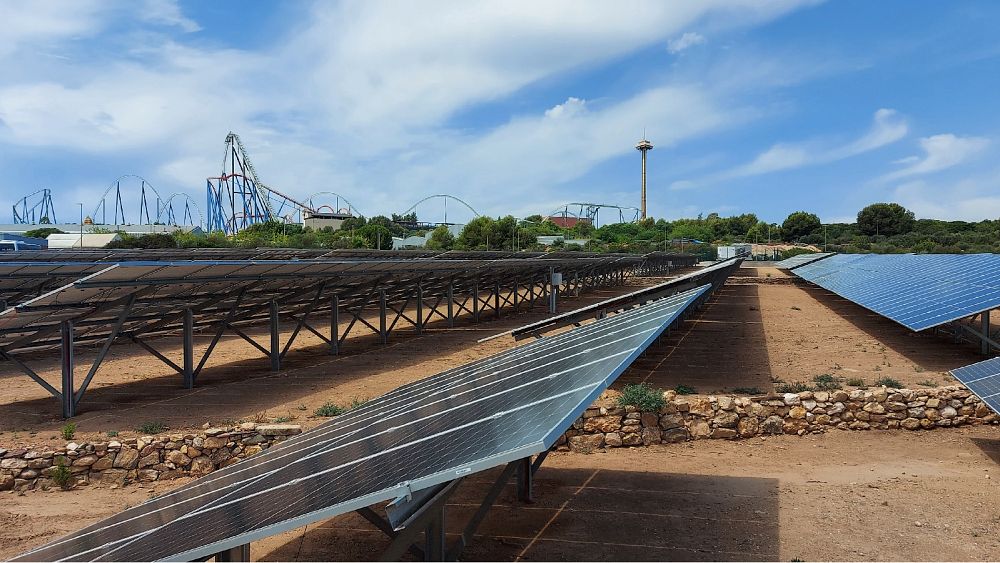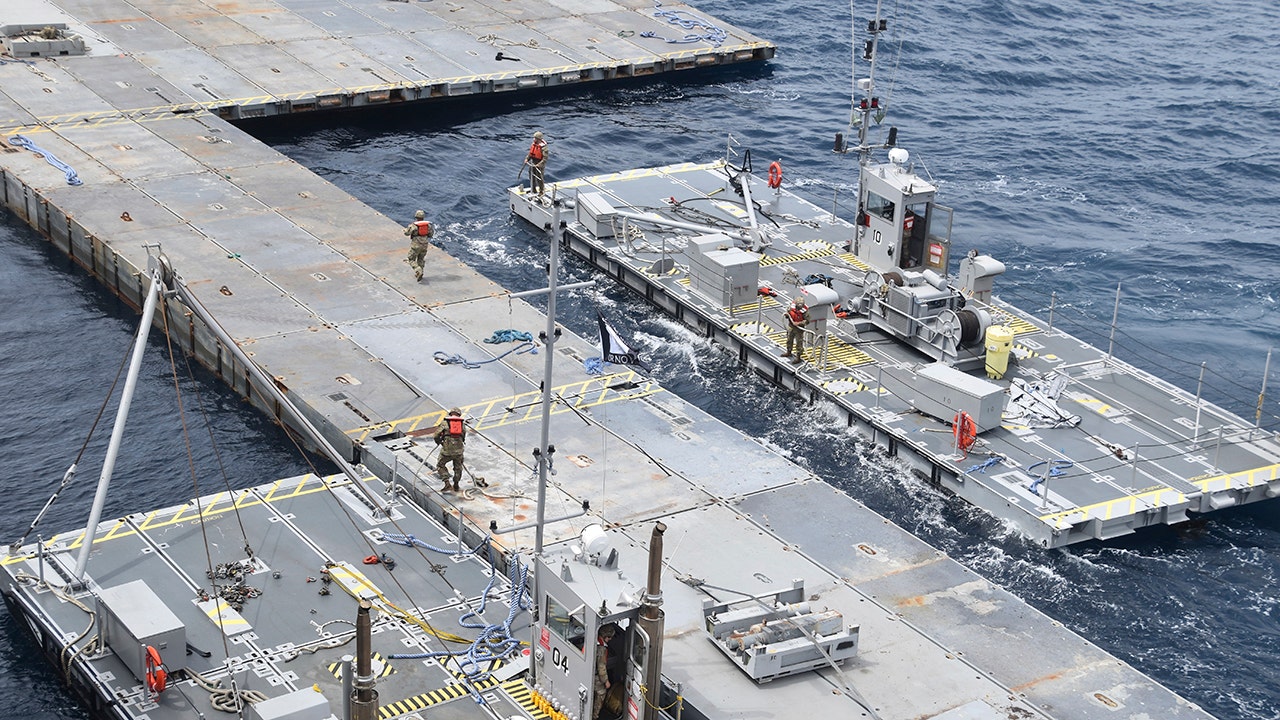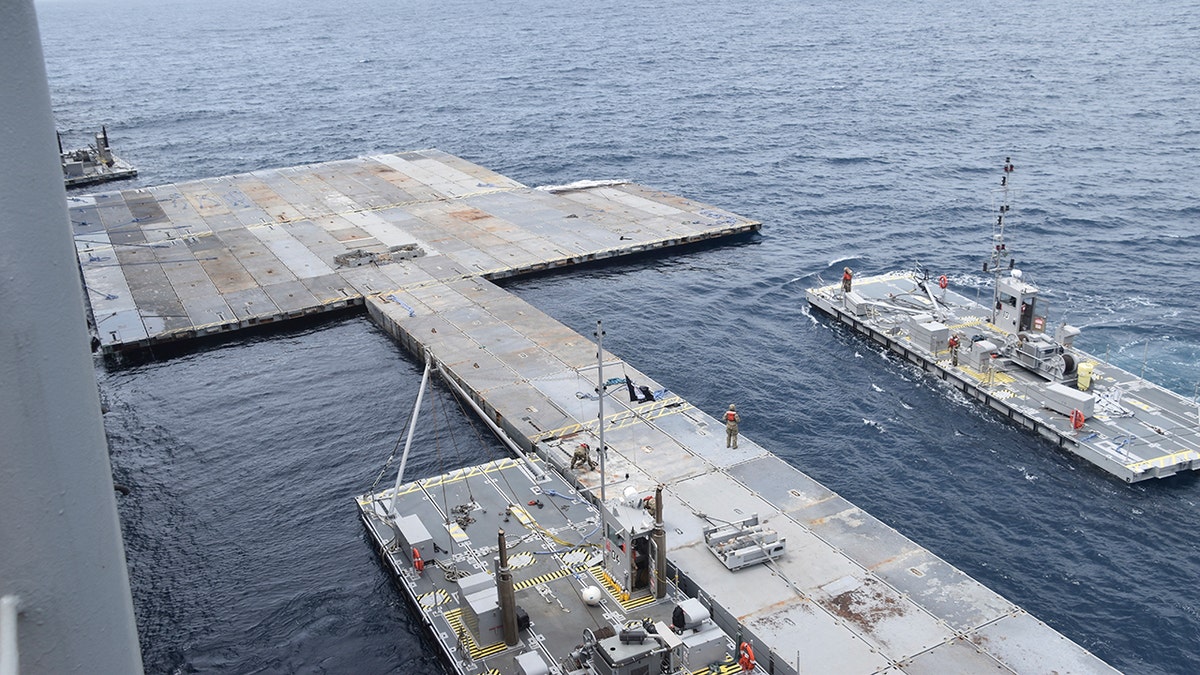World
Ride and shine: PortAventura goes solar to power amusement park

Spain’s tourism companies are increasingly turning to renewables to power themselves and prove that the sector can also be a force for good.
Unbeknown to the tourists hurtling around the rollercoasters under the beating July sun, a silent sea of black solar panels has made a subtle change to one of Europe’s biggest attraction parks.
Some 11,000 panels will now provide a third of the energy to power the rides like Ferrari Land at PortAventura World after the solar park went live earlier this month.
The panels dominate a huge field that was used for growing crops but will now help make this resort, which attracts thrill seekers from across Europe, a reference point for a new kind of sustainable tourism.
Héctor Gómez, Spain’s minister for industry, commerce and tourism, said last month Spain was the best European country for investments in renewable energy whether they are in tourism or cars like Tesla.
“What we say to the big companies interested in Spain is that we are the most competitive country in terms of price of renewable energy,” he then told La Vanguardia, a Spanish newspaper.
At Portaventura World, the solar park fills enough space for nine football fields and provides the same amount of electricity used in 3,000 family homes during a year.
This is just the first phase of an ambitious plan by the pleasure park and Spanish energy giants Endesa to make the switch to green tourism.
The park, which is about 110 km south of Barcelona, attracted 5.1 million tourists last year, with Spaniards, French and British the biggest groups by nationality.
Tourism can also ‘work for the planet’
Other attraction parks in Europe and beyond have consulted PortAventura World about the project as the link between having fun and reducing our carbon footprints becomes compelling.
The solar project at PortAventura World will save 4,000 tonnes of CO2 per year.
A second phase of panels is planned later this year and the park has also installed 150 electric car chargers which are free for customers and staff.
Just how important this switch to green tourism is was made clear when executives arrived late for the panels’ inauguration earlier this month because of a downpour in Zaragoza, on the route between Madrid and the park.
Cars with their drivers clinging desperately to the roofs were swept down roads which were reduced to rivers in images that went viral around the world.
With some understatement, José Bogas, the CEO of energy company Endesa, admitted “climatic conditions” delayed executives’ arrival.
Standing in front of banks of solar panels, Choni Fernández, sustainability director of Portaventura World, said: “We don’t just want to inaugurate the solar panels but also the electric charger hubs in our transition towards a more sustainable form of tourism.
“We want to emphasise how tourism is not a source of richness and creation of jobs but also how we can work for the planet.”
She added: “In September we will start an educational section to show school visitors how you generate renewable energy. It can be a place to teach the youngest among us about the challenges we face.”
Wineries and hotels join the movement
But in tourism-dependent Spain, where the sector accounts for about 12% of gross domestic product, green energy is being deployed across the sector.
For those with a taste for wine, bodegas in the northern Castile and Leon region are using renewable power to make the Ribera del Duero, a rich red and white which is increasingly rivalling Rioja, Spain’s most popular wine.
On the so-called ‘Golden Mile’, where there are a series of wineries, lies the Abadia Retuerta bodega.
“We contribute to the circular economy and a fundamental part of this is managing natural resources. A clear example of this is the use of solar panels from which we get about 30% of the power needed to run (the winery),” Enrique Valero, CEO of Abadia Retuerta, told Euronews.
“We want to do this in an ethical and responsible way.”
The huge winery, which also doubles as a luxury spa and hotel, produces wines at the top end of the market.
In another project, RIU Hotels and Resorts, a major Spanish hotel chain, signed a deal last year with Iberdrola to use renewable energy to provide 100% of the energy for 11,000 rooms in 27 hotels.
This will avoid the emission of 30,000 tonnes of CO2 – or the same amount which would be captured by about 300,000 trees.
Down the road from Portaventura World is Salou, a resort on the Costa Dorada which is popular with French and British tourists.
Here, private campsites have been fitted with solar panels on top of shades above parking places to generate power.
Salou Council, like many local authorities across Spain, wants to use renewable energy as part of its urban planning.
Pere Granados, mayor of Salou, said among projects planned will be the “renewal of urban lighting with renewable energy and energy efficiency systems”.
So from big to small-scale projects, Spain is thinking of green tourism for the future.

World
Mapping Russia’s Sudden Push Across Ukrainian Lines

All of a sudden, Russian forces are making progress in many directions at once.
In recent days, Russian troops have surged across the border from the north and opened a new line of attack near Kharkiv, Ukraine’s second-largest city, capturing settlements and villages and forcing thousands of civilians to flee.
Sources: Institute for the Study of War with American Enterprise Institute’s Critical Threats Project, Ukrainian officials
The New York Times
It may be a feint. The real goal may be to divert already-weakened Ukrainian forces from critical battles elsewhere. But one thing is clear: The map of battle in Ukraine looks a lot different today than it did only a week ago.
Ukraine is more vulnerable than at any time since the harrowing first weeks of the 2022 invasion, a range of soldiers and commanders have said in interviews.
It is too soon to know if the war in Ukraine has hit a turning point. But Russia’s progress isn’t just in the northeast.
Russia has been making small but geographically broad gains across the eastern front. And what started as a modest Russian advance near Avdiivka has grown in recent weeks into a roughly 15-square-mile bulge that is complicating the defense of the Donetsk region.
Sources: Institute for the Study of War with American Enterprise Institute’s Critical Threats Project, Ukrainian officials The New York Times
Months of delays in American assistance, a spiraling number of casualties and severe shortages of ammunition have taken a deep toll, evident in the exhausted expressions and weary voices of soldiers engaged in daily combat.
Whether Russia will succeed in weakening Ukraine’s defenses in other parts of the front line remains to be seen.
A big objective, according to Franz-Stefan Gady, a Vienna-based military analyst, appears to be to draw Ukrainian forces away from Chasiv Yar, a town on strategic high ground where Ukrainians have fought for weeks to stave off an attack.
Russia’s broad range of attacks appears to be stretching Ukrainian forces thin. Gen. Kyrylo Budanov, the head of Ukraine’s military intelligence agency, said in an interview from a bunker in Kharkiv this week that it has been difficult to find the personnel to shore up defenses in the northeast.
“All of our forces are either here or in Chasiv Yar,” he said. “I’ve used everything we have. Unfortunately, we don’t have anyone else in the reserves.”
World
US military constructs hulking metal pier amid Biden's $320 million gamble to get aid into Gaza

The U.S. military has completed the construction of a hulking metal pier that is expected to be jabbed into a beach in northern Gaza in the coming days, officials said.
Completing the massive makeshift structure — approximately 1,500-ft long or the length of five U.S. football fields — is the first step in the Biden administration’s two-month-long, $320 million gamble to open a sea route to get humanitarian aid through the eastern Mediterranean and into Gaza, where Israel continues to wage war with the Hamas terror group.
The construction of the new floating pier and causeway is risky for President Biden and the Pentagon as aid delivery teams face unknown dangers and uncertainties as they attempt to work around the challenges of getting aid into Gaza through the Rafah border.
“In the coming days, you can expect to see this effort underway. And we are confident that we will be able to, working with our NGO partners, ensure that aid can be delivered,” Maj. Gen. Pat Ryder, the Pentagon press secretary, said Tuesday, noting humanitarian groups were ready for the first shipments through the new U.S. maritime route.
REPUBLICAN SAYS BIDEN HAS ‘STRENGTHENED’ HAMAS BY WITHHOLDING AID FROM ISRAEL: ‘COMPLETELY INCOMPETENT’
In this image provided by the U.S. Army, soldiers assigned to the 7th Transportation Brigade (Expeditionary) and sailors attached to the MV Roy P. Benavidez assemble the Roll-On, Roll-Off Distribution Facility (RRDF), or floating pier, off the shore of Gaza in the Mediterranean Sea on April 26, 2024. (U.S. Army via AP)
The administration’s effort to open the additional sea route comes as the intensifying war between Israel and Hamas has neared the land crossings in Rafah.
Scott Paul, an associate director of the Oxfam humanitarian organization, described the sea route as “a solution for a problem that doesn’t exist” because land crossings could bring in all the needed aid, he said.
Paul suggested the amount of aid that is allowed to be delivered into Gaza is dependent on Israeli officials allowing it. Some officials have expressed concerns the aid could fall into the hands of Hamas, the very terrorists that Israel is seeking to eliminate from the Palestinian territory.
UN REVISES GAZA DEATH TOLL, ALMOST 50% LESS WOMEN AND CHILDREN KILLED THAN PREVIOUSLY REPORTED
“Like all of the land crossings, it comes down to the consent of the government of Israel,” Paul said. “If Israel is comfortable with allowing the maritime corridor to function … then it will work in a limited way. And if they don’t, it won’t. Which is why it’s a very, very expensive alternative.”

The pier is part of the Army’s Joint Logistics Over The Shore (JLOTS) system which provides critical bridging and water access capabilities. (U.S. Army via AP)
Ophir Falk, foreign policy adviser to Israeli Prime Minister Benjamin Netanyahu, said Tuesday that the country had enabled the entrance of thousands of aid trucks into Gaza and would continue to do so.
Falk accused Hamas of disrupting aid distribution by hijacking and attacking convoys.
The Israeli military said in a statement Tuesday that it will keep acting in line with international law to distribute aid to Gaza. It also has previously said there are no limits on aid.
Israeli Prime Minister Benjamin Netanyahu pledged to Biden to allow in more aid and safeguard those workers.

U.S.-military-backed construction crews in the eastern Mediterranean created a hulking metal dock, completing the first part of the Biden administration’s $320 million effort to open a sea route to get humanitarian aid into Gaza. (AP Photo/Leo Correa)
Anastasia Moran, an associate director for the International Rescue Committee, a global humanitarian group, said truckloads of aid entering Gaza increased by 13% last month.
The Israel-Hamas war has been particularly lethal to Palestinian civilians residing in Gaza with Palestinian health officials estimating more than 35,000 have been killed. Israeli officials estimate the number of deceased civilians is approximately 16,000 civilians. A U.N report from May 8 found the number of women and children killed so far in the war to be just under 13,000.
The Associated Press contributed to this report.
World
Canadian Nobel-winning author Alice Munro dies aged 92

Munro was renowned for her short stories, which focussed on the frailties of the human condition.
Alice Munro, the Nobel Prize-winning Canadian author known for her mastery of the short story, has died at the age of 92.
Munro died at her home in Port Hope, Ontario, publisher Kristin Cochrane, chief executive officer of McClelland & Stewart, said in a statement on Tuesday.
“Alice’s writing inspired countless writers … and her work leaves an indelible mark on our literary landscape,” Cochrane said.
Munro published more than a dozen collections of short stories, which she focused on the frailties of the human condition and set in the rural Ontario countryside where she grew up.
Awarded the International Booker Prize for her body of work in 2009, and the Nobel Prize in Literature in 2013, Munro was diagnosed with dementia about a decade ago and was living in a care home.
Canadian Prime Minister Justin Trudeau said the world had “lost one of its greatest storytellers”.
“A true literary genius … her short stories about life, friendship, and human connection left an indelible mark on readers,” he said.
Munro was born on July 10, 1931, in Wingham, Ontario. Her father raised foxes and poultry, while her mother was a smalltown teacher.
Munro decided she wanted to be a writer when she was 11, and never wavered in her career choice.
“I think, maybe I was successful in doing this because I didn’t have any other talents,” she once explained in an interview.
“I’m not really an intellectual,” Munro said. “There was never anything else that I was really drawn to doing, so nothing interfered in the way life interferes for so many people.”
“It always does seem like magic to me.”
Munro’s first story, The Dimensions of a Shadow, was published in 1950, while she was studying at the University of Western Ontario.
Munro was three times awarded the Governor General’s Award for fiction, the first for Dance of the Happy Shades, a collection of stories published in 1968. Who Do You Think You Are (1978) and The Progress of Love (1986) also won Canada’s highest literary honour.
Her short stories were often published in the pages of prestigious magazines, such as The New Yorker and The Atlantic. Her last collection of work, Dear Life, appeared in 2012.
The characters in Munro’s stories were often girls and women who led seemingly unexceptional lives but struggled with issues ranging from sexual abuse and stifling marriages to repressed love and the ravages of age.
She was often likened to Anton Chekhov, the 19th-century Russian known for his brilliant short stories – a comparison made by the Swedish Academy when it awarded her the Nobel Prize.
Calling Munro a “master of the contemporary short story”, the Academy also said: “Her texts often feature depictions of everyday but decisive events, epiphanies of a kind, that illuminate the surrounding story and let existential questions appear in a flash of lightning.”
-

 Politics1 week ago
Politics1 week agoHouse Dems seeking re-election seemingly reverse course, call on Biden to 'bring order to the southern border'
-

 Politics1 week ago
Politics1 week agoFetterman says anti-Israel campus protests ‘working against peace' in Middle East, not putting hostages first
-

 World1 week ago
World1 week agoGerman socialist candidate attacked before EU elections
-

 News1 week ago
News1 week agoUS man diagnosed with brain damage after allegedly being pushed into lake
-

 World1 week ago
World1 week agoGaza ceasefire talks at crucial stage as Hamas delegation leaves Cairo
-

 Politics1 week ago
Politics1 week agoRepublicans believe college campus chaos works in their favor
-

 World1 week ago
World1 week agoStand-in Jose Raul Mulino wins Panama presidential race
-

 World1 week ago
World1 week agoTech compliance reports, Newsletter


















